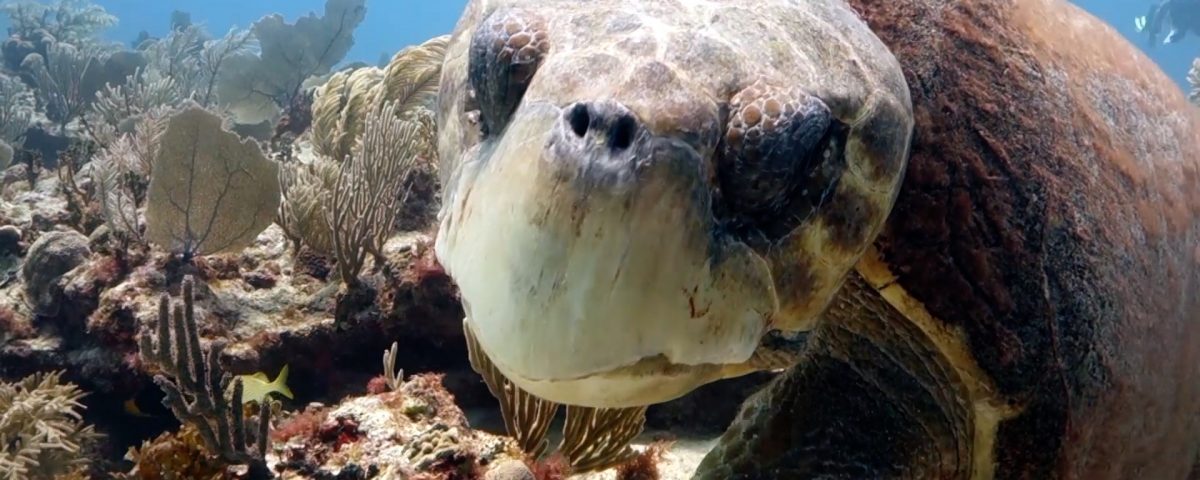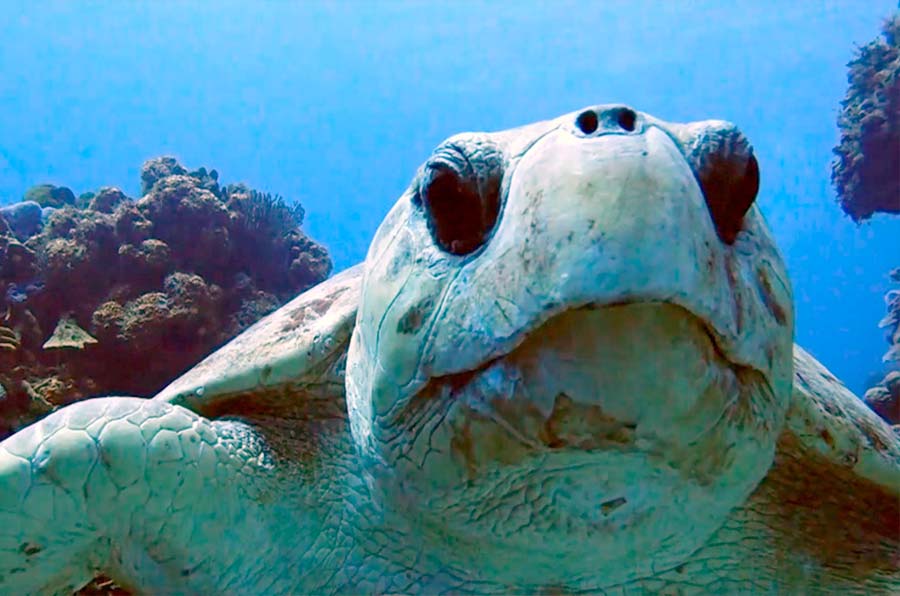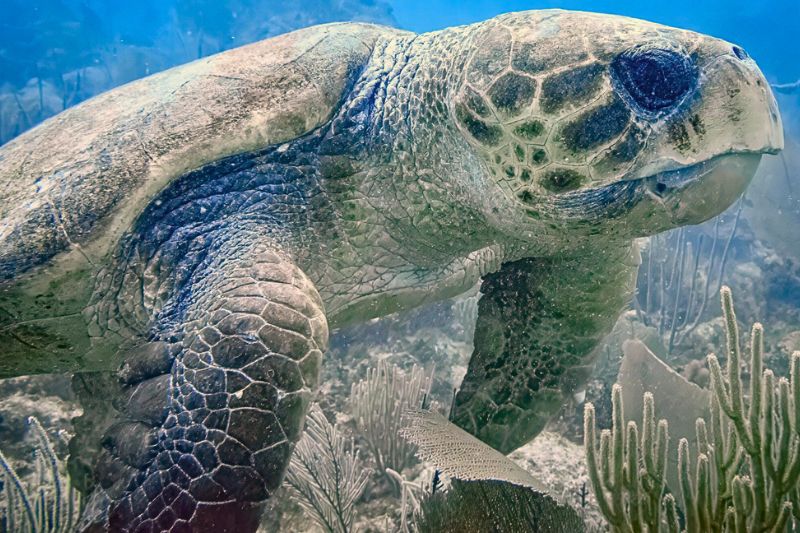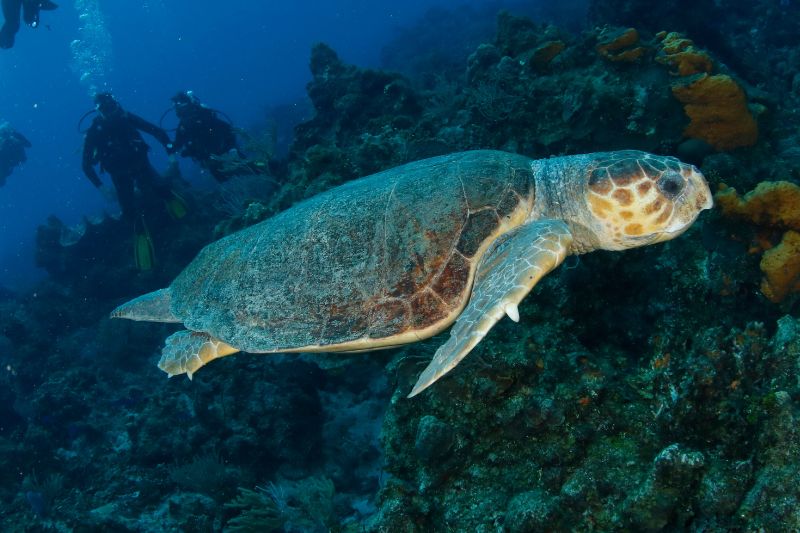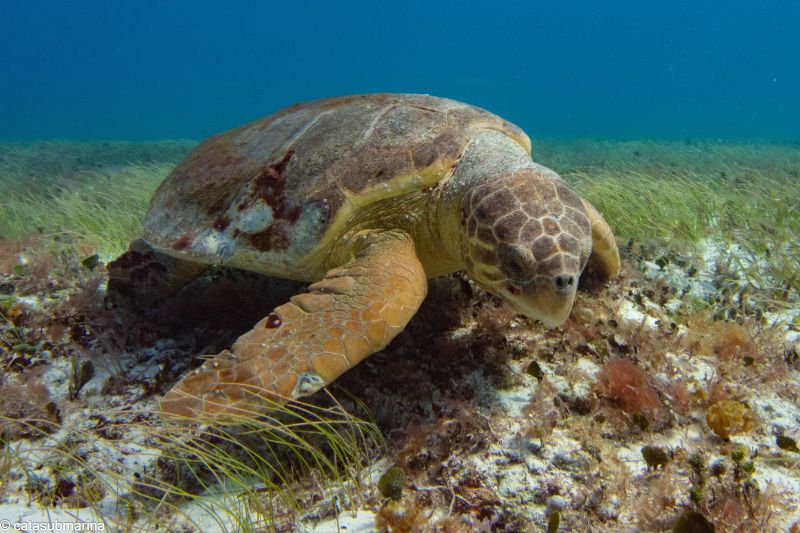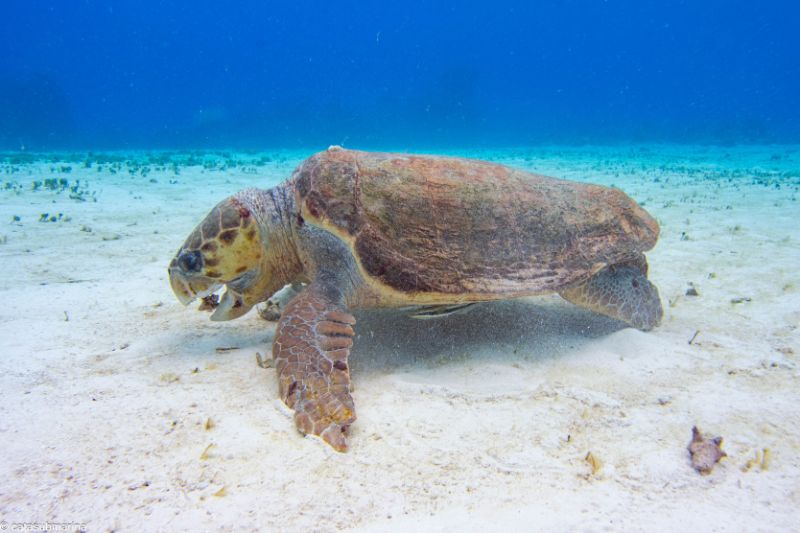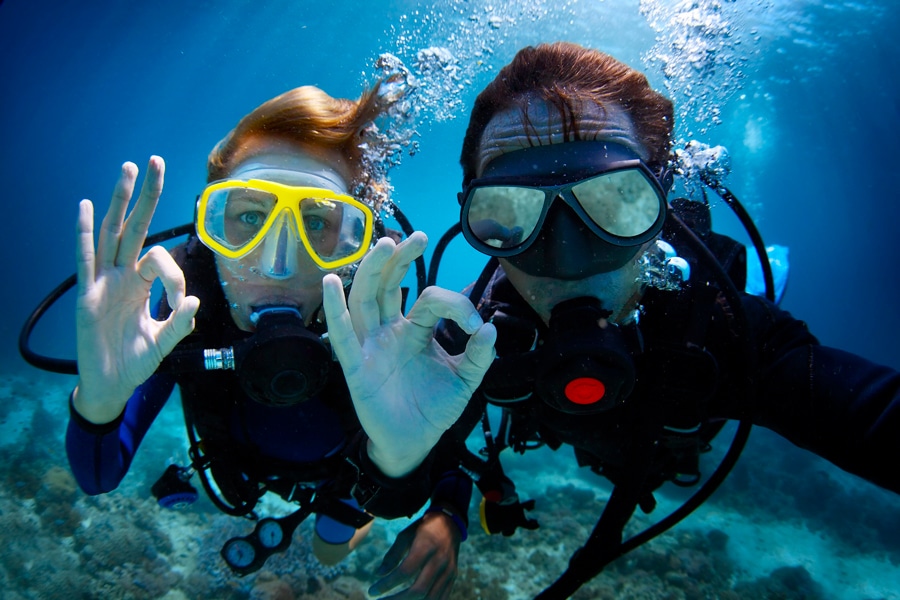2.7. Baby Loggerhead Turtles
When baby loggerhead turtles are born, they are tiny, only about 5 cm (2 inches)!
And once they hatch, they have to wait for nightfall to avoid predators.
When night falls, it’s time to race towards the sea! The little turtles need to cross the beach as quickly as possible to save their lives.
It’s an epic moment in the life of a loggerhead turtle, full of adrenaline.
2.8. Diet of the Loggerhead Turtle
Loggerhead turtles have a pretty varied diet. Though they’re known for eating hard-shelled mollusks and crustaceans, they also enjoy jellyfish and other softer marine creatures.
Their powerful beak and jaws allow them to crush hard prey with ease. A full menu for a creature of their size!
2.9. Solitary Behavior of the Loggerhead Turtle
If we’re talking about loggerhead turtle facts, one thing stands out again and again: they’re solitary creatures by nature.
Out in the open ocean, these turtles swim alone, eat alone, rest alone, and migrate alone… yep, alone.
Do they meet other turtles? Of course! They might cross paths in feeding areas or during the nesting season. But don’t expect a beach party. These interactions are brief, like a “hey, goodbye” kind of deal.
Now, it might look like they form groups when they all arrive to nest on the same beach. But no, each turtle digs its own nest, lays its eggs, and leaves without a second thought. No teamwork here, just an incredible biological GPS leading them to the same place.
And here’s the good part: even though they’re solitary, they’re not mute. Another one of those surprising loggerhead turtle facts is that, according to the latest research, they communicate, especially during egg hatching. How? Let me tell you in a second.
So yes, among the loggerhead turtle facts, their solitary lifestyle stands out… but with some hidden social nuances beneath that shell.
2.10. Respiratory System of Loggerhead Turtles
If you’re looking for loggerhead turtle facts that will leave you in awe, their respiratory system deserves a spot on the podium.
Although they spend their lives in the ocean, they’re not fish. Loggerhead turtles (Caretta caretta) need air to breathe, just like you and me. No gills or underwater filters here: they surface, take a breath, and dive back down into the deep blue.
Here’s another surprising loggerhead turtle fact: they can’t inflate their chest like we do. Why? Because their shell is a rigid armor. So, they work their internal organs like bellows.
Yes, you read that right.
They move their internal organs as if they were bellows, allowing air to flow in and out of their lungs while they swim. A brilliant adaptation that helps them conserve energy without sacrificing their breathing needs.
And here’s another super-heroic loggerhead turtle fact: they can stay underwater for hours. And in winter, when their metabolism slows down, they can even spend months submerged without coming up for air.
Months! No tanks, no snorkels, no complaints.
Perfect for hibernating or spending long hours without surfacing.
When it comes to loggerhead turtle facts, their way of breathing says it all: it’s designed to survive, conquer the ocean, and leave us in awe.




